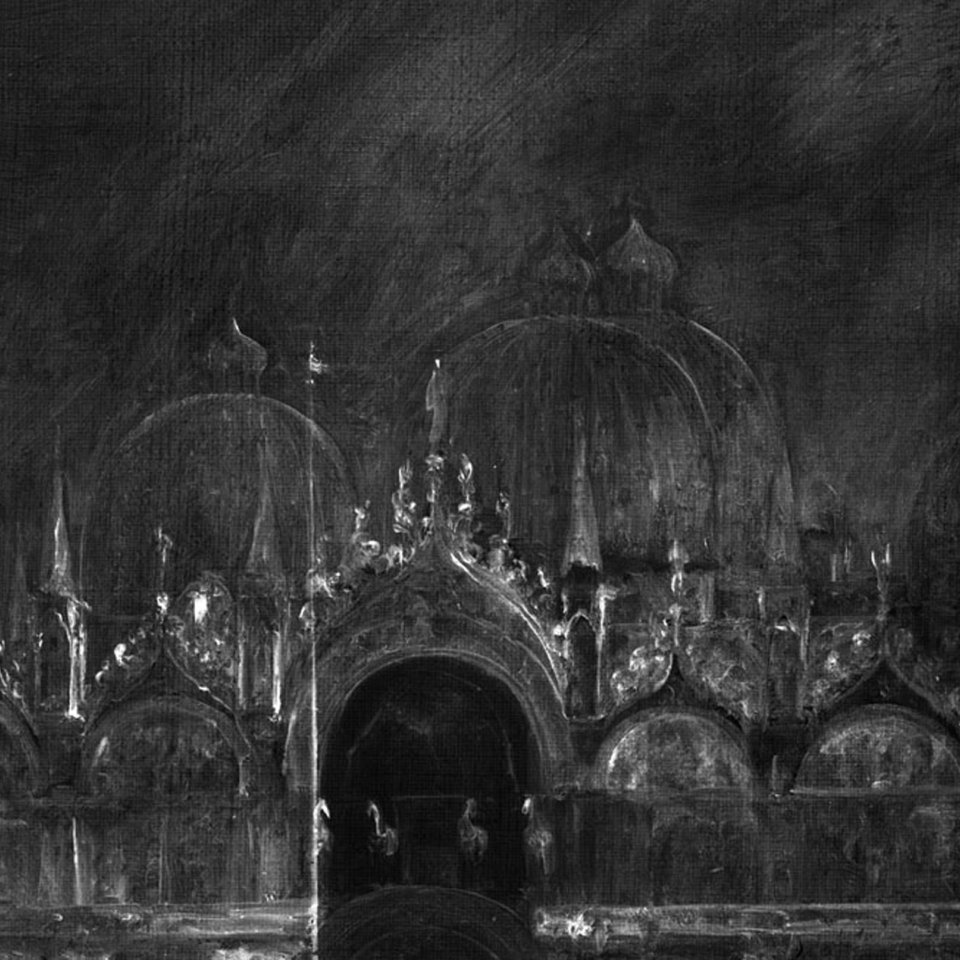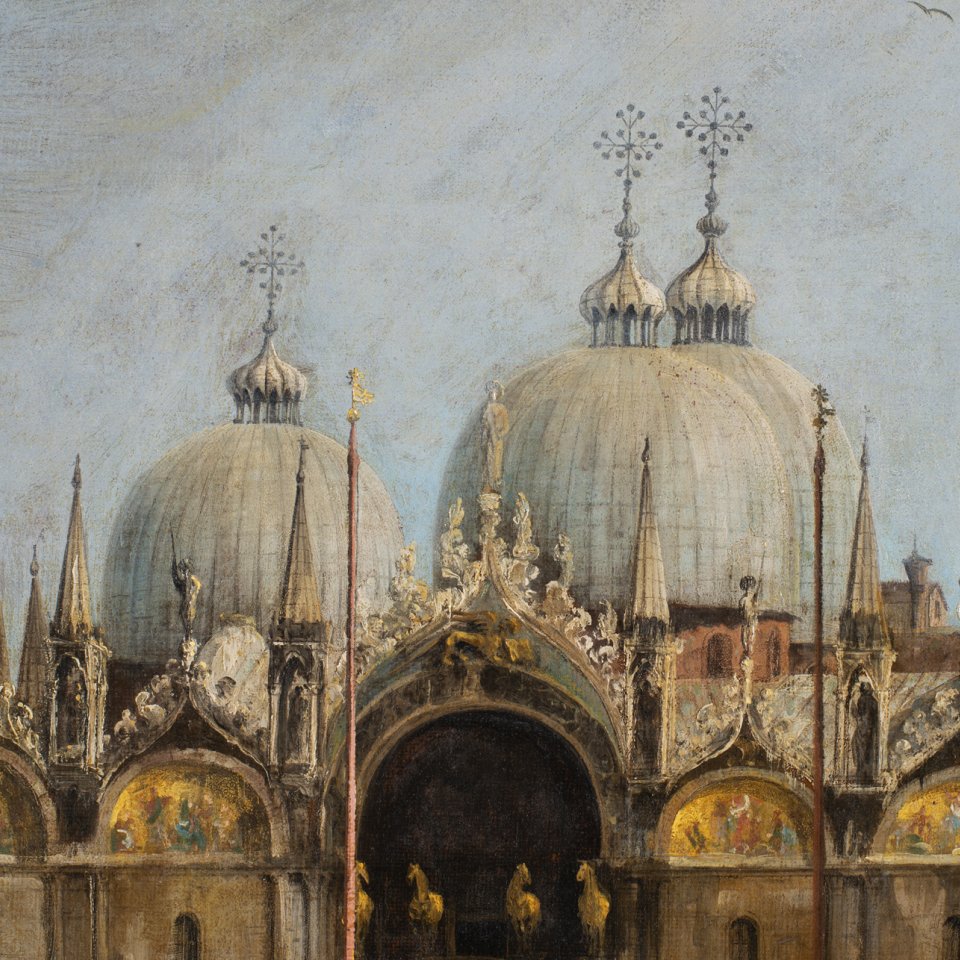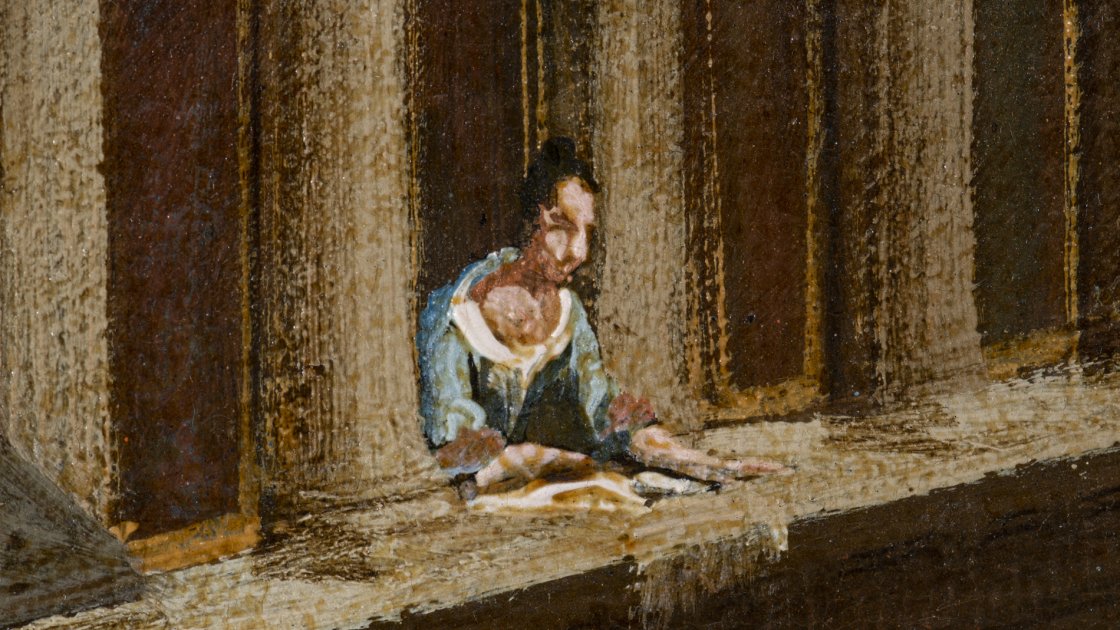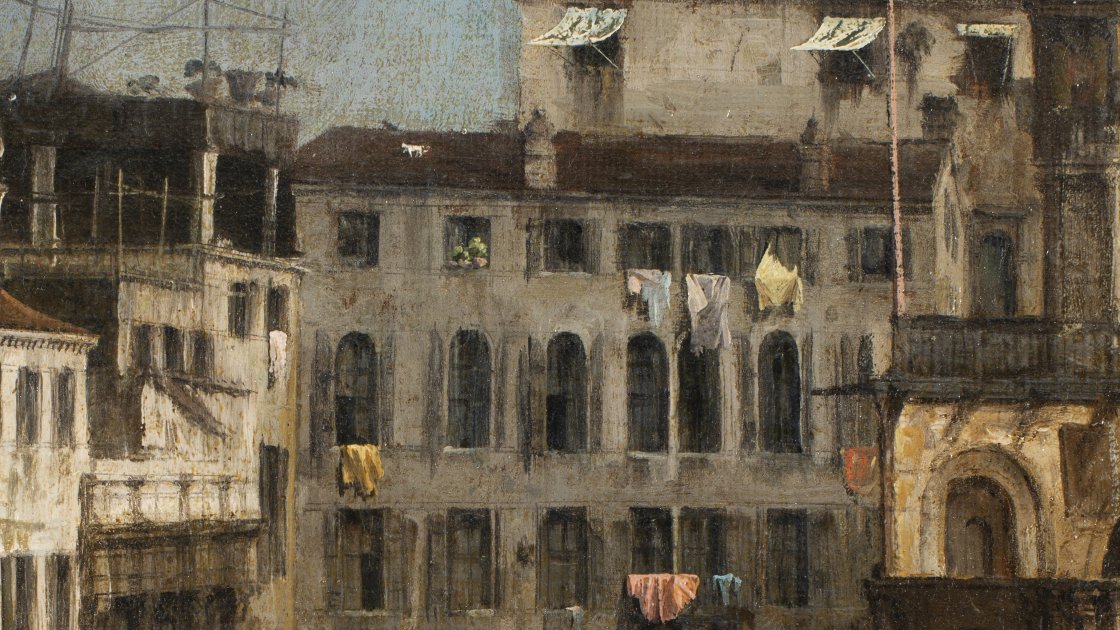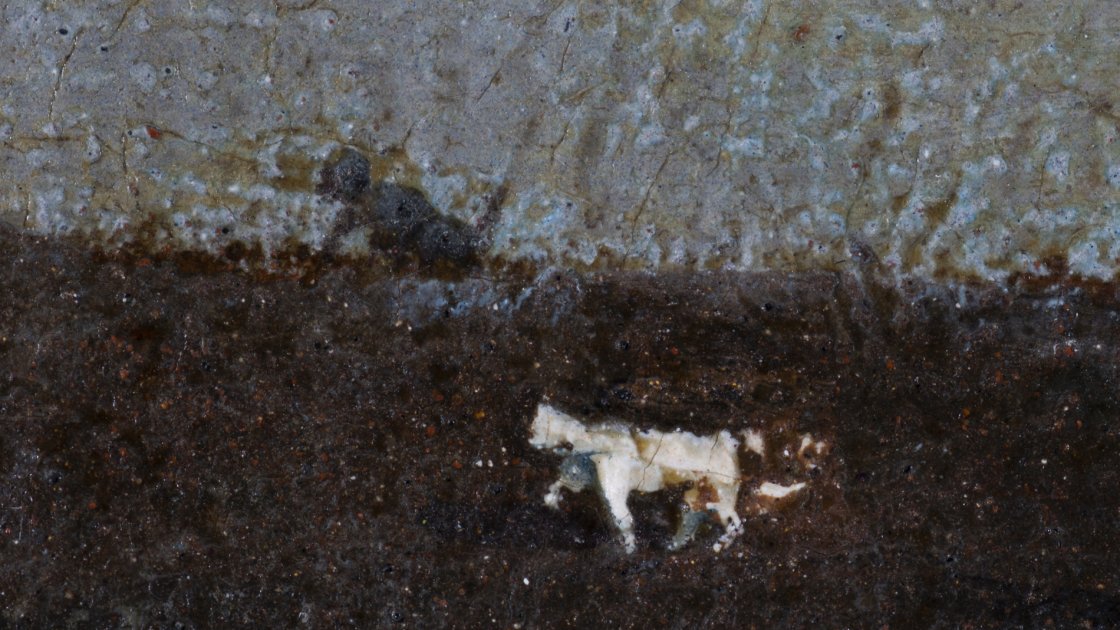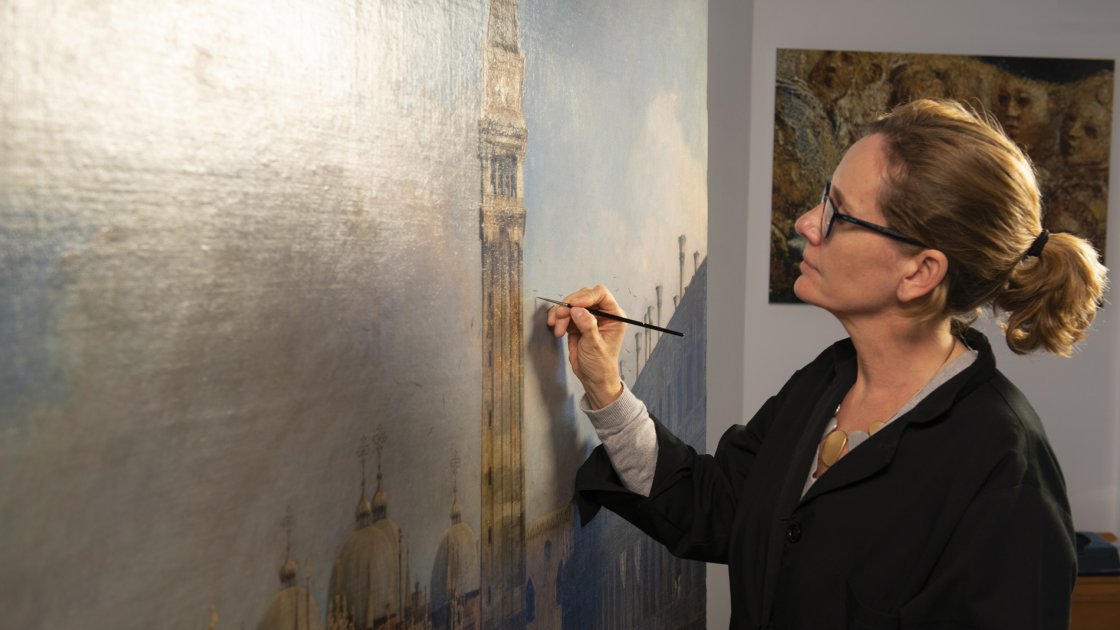Restoration and technical study
The technical study and restoration of Canaletto’s work The Piazza San Marco in Venice was made possible by the sponsorship of Artika and a crowdfunding campaign to which over six hundred people contributed.
The painting had been distorted by the oxidation of the varnish layer, creating a brownish-yellow film that obscured the colours and luminosity of the original.
The paint layers were somewhat unstable, as the materials had become brittle due to ageing. A full technical study was conducted to determine what type of intervention was needed. In the course of that intervention, we consolidated the paint layers and removed the layers of aged varnishes. Numerous areas of altered repainting, added in earlier restorations, were also removed.
The restoration work done over the course of 2019 recovered the original light, nuances and painstaking details, giving us a better idea of what the artist intended when he painted the different elements of the picture.
Restoring Canaletto
The work appeared distorted due to deterioration, caused by old interventions and different layers of oxidised varnish, that were hiding the colours and luminosity of the original painting behind a yellow veil.
The intervention consisted in recovering as much as possible the artist´s intention. For that purpose, degraded varnish layers together with some overpainting and aditions have been removed and the original paint losses have been reintegrated to restore the unity. This way, the morning light and nuances with which Canaletto conceived “la vedute” have been recovered.
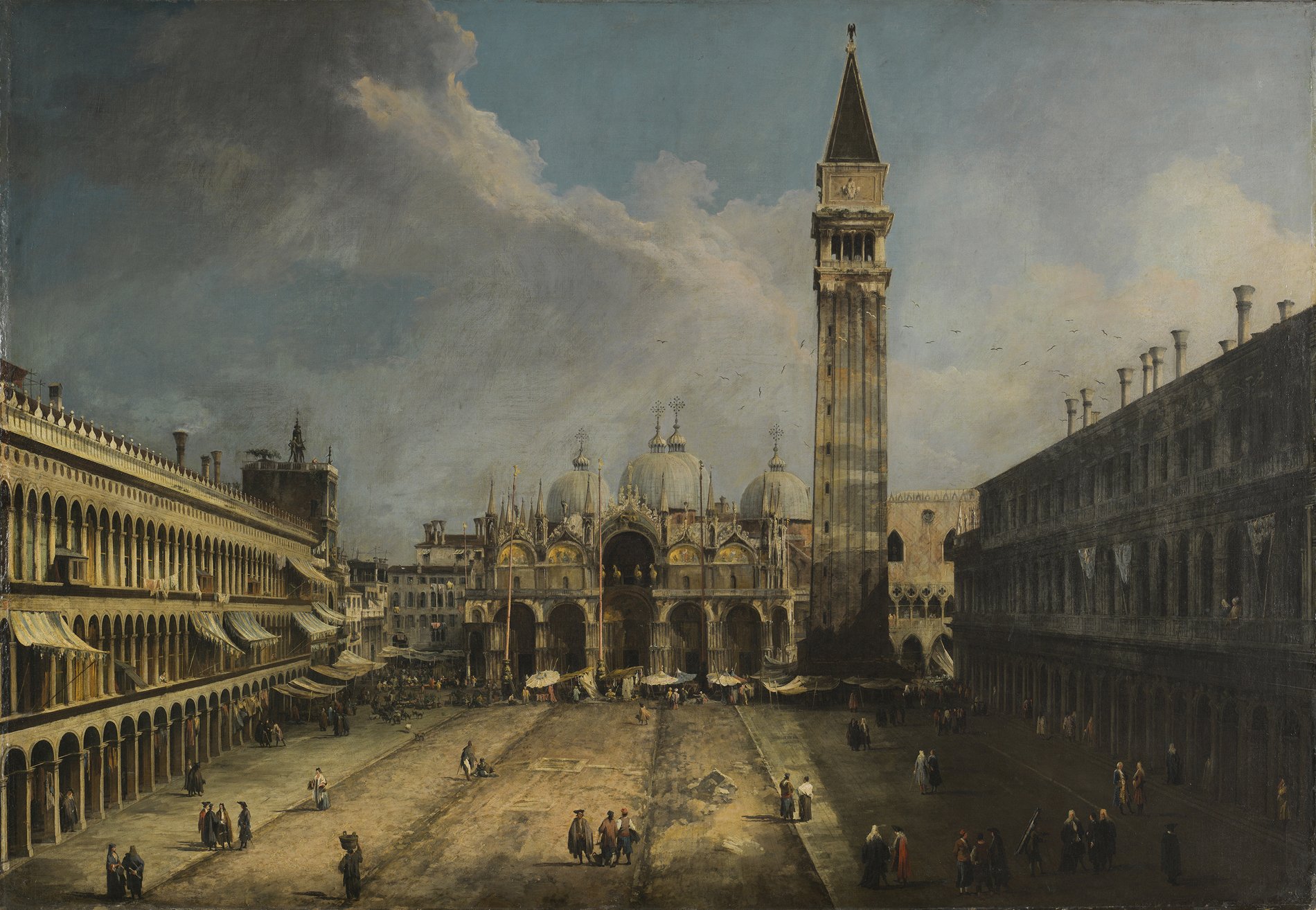
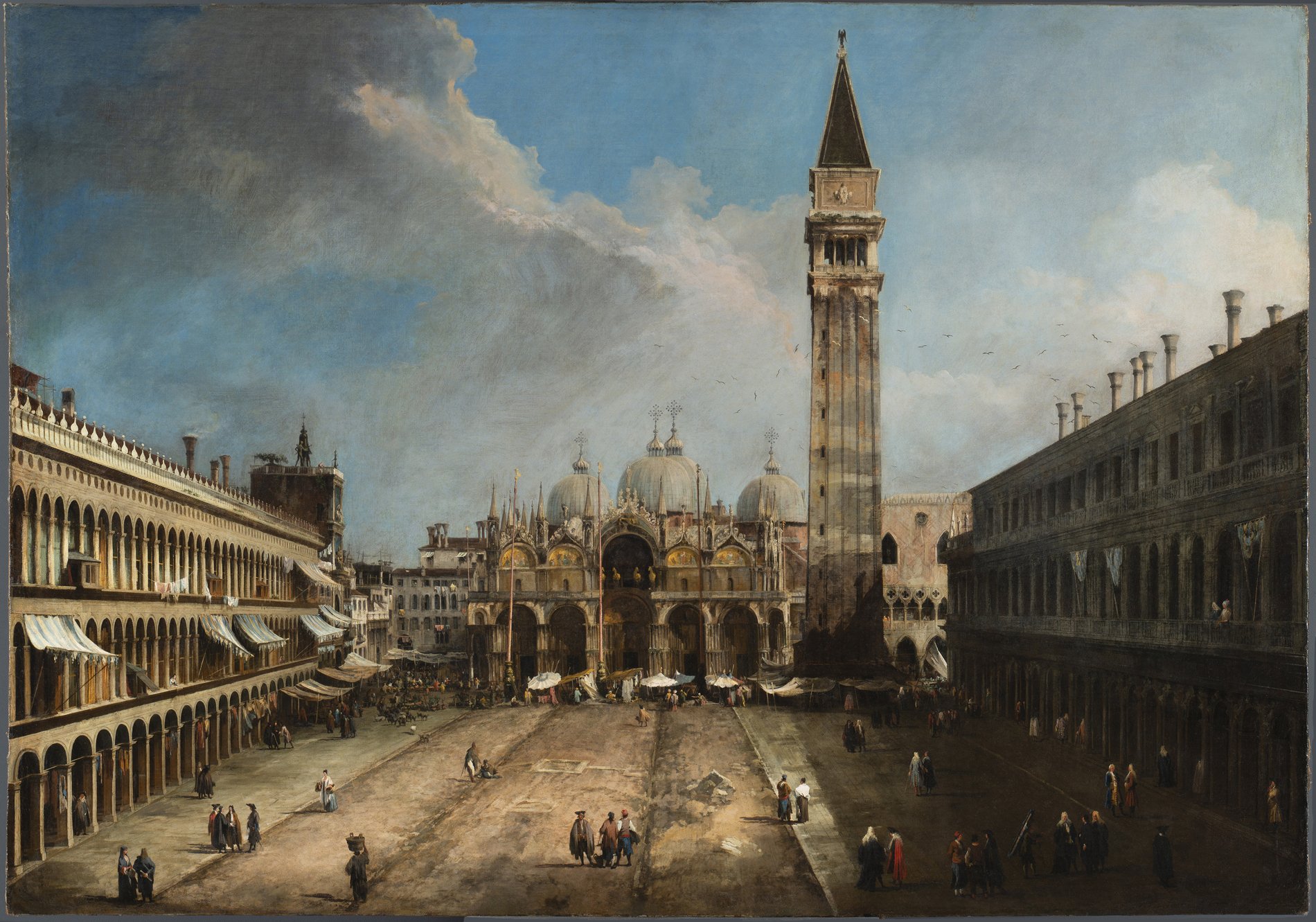
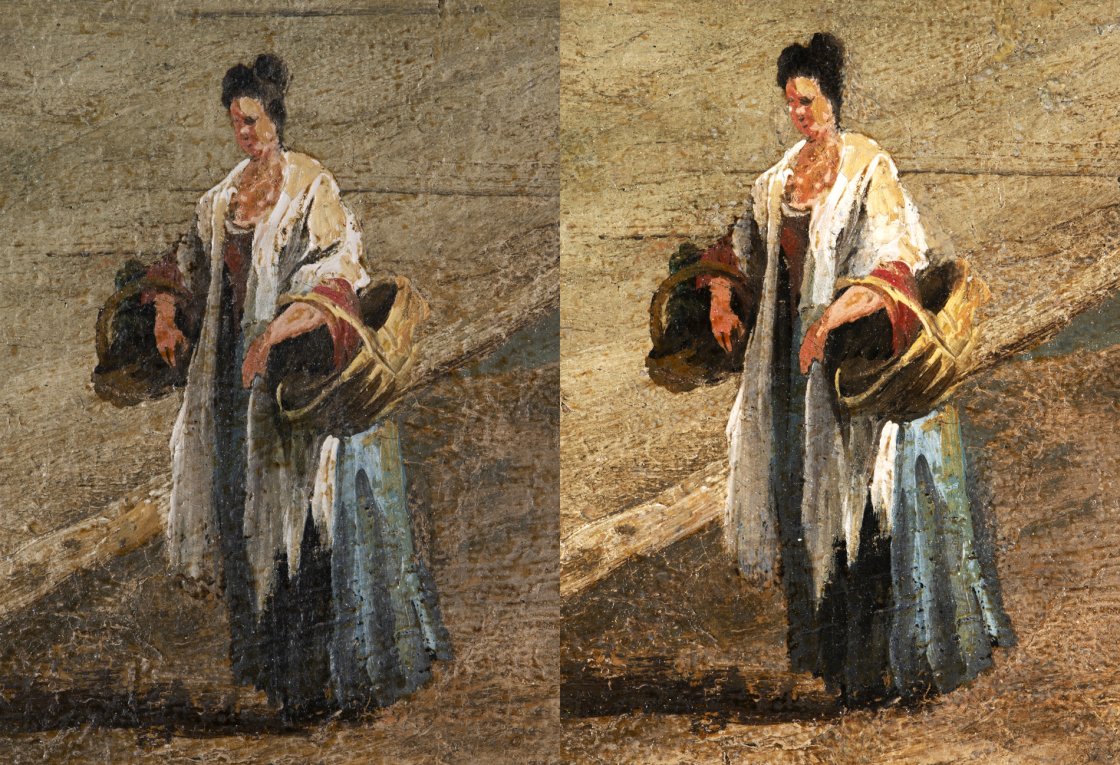
Thanks to restoration, definition has been recovered in details that were hidden under the layer of dirt and oxidised varnish. This figure presented losses in the paint layer and the same accumulated grime as the rest of the work. Removal of varnishes added in an old restoration that altered and distorted the painting appearance.
The new restoration recovered the original luminosity of the white paint, as shown in the detail image. The cleaning and the chromatic reintegration recovered the figures original unity.
Technical process
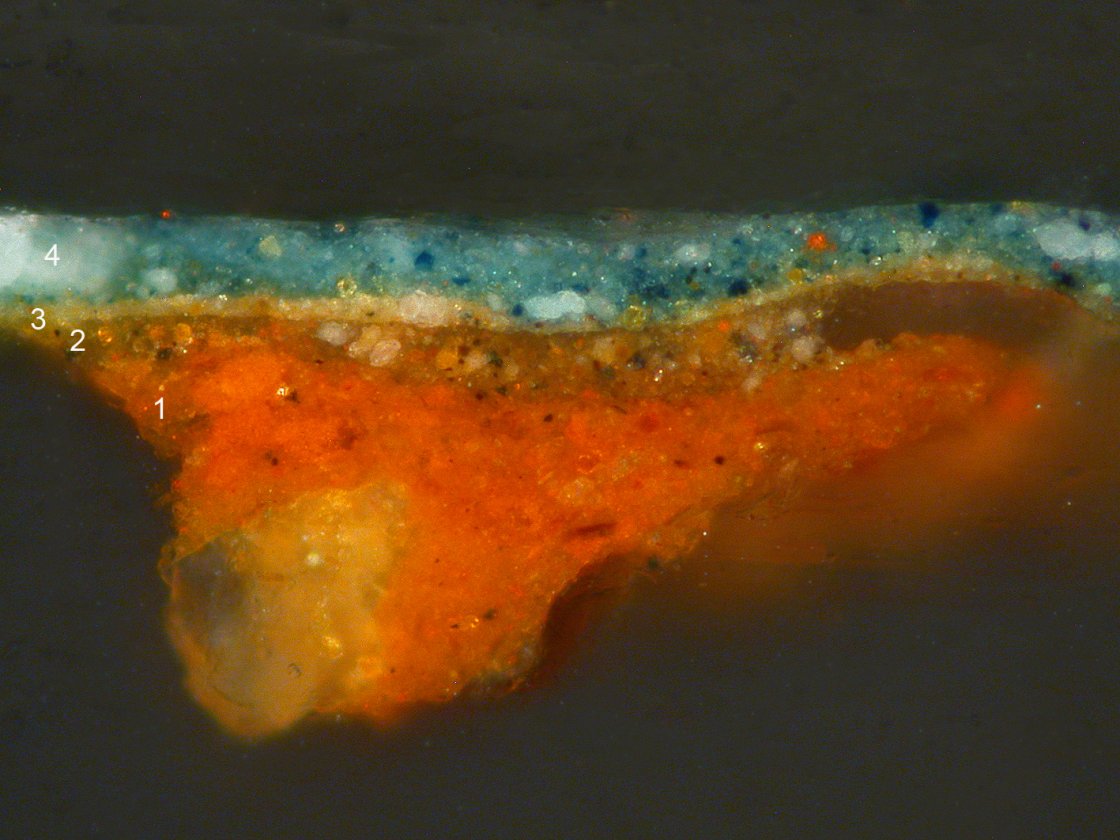
Cross-section of a microsample taken from the blue decoration of the mosaic.
Layer 1 corresponds to the reddish-orange ground of the canvas; layer 2 is the light brown underpainting applied to every area with light structures; and layers 3 and 4 are the superimposed coats of paint applied to create the mosaic decoration.
The underdrawing
In the detail of the infrared image, we can see the underlying lines that define the composition’s perspective. These lines, part of the work’s creative process, continue behind the figures that appear in the scene.
Canaletto drew lines to fix the position of the buildings. On the front-facing facade, we can see a grid where he situated the openings. He corrected the composition of the windows with semi-circular arches.
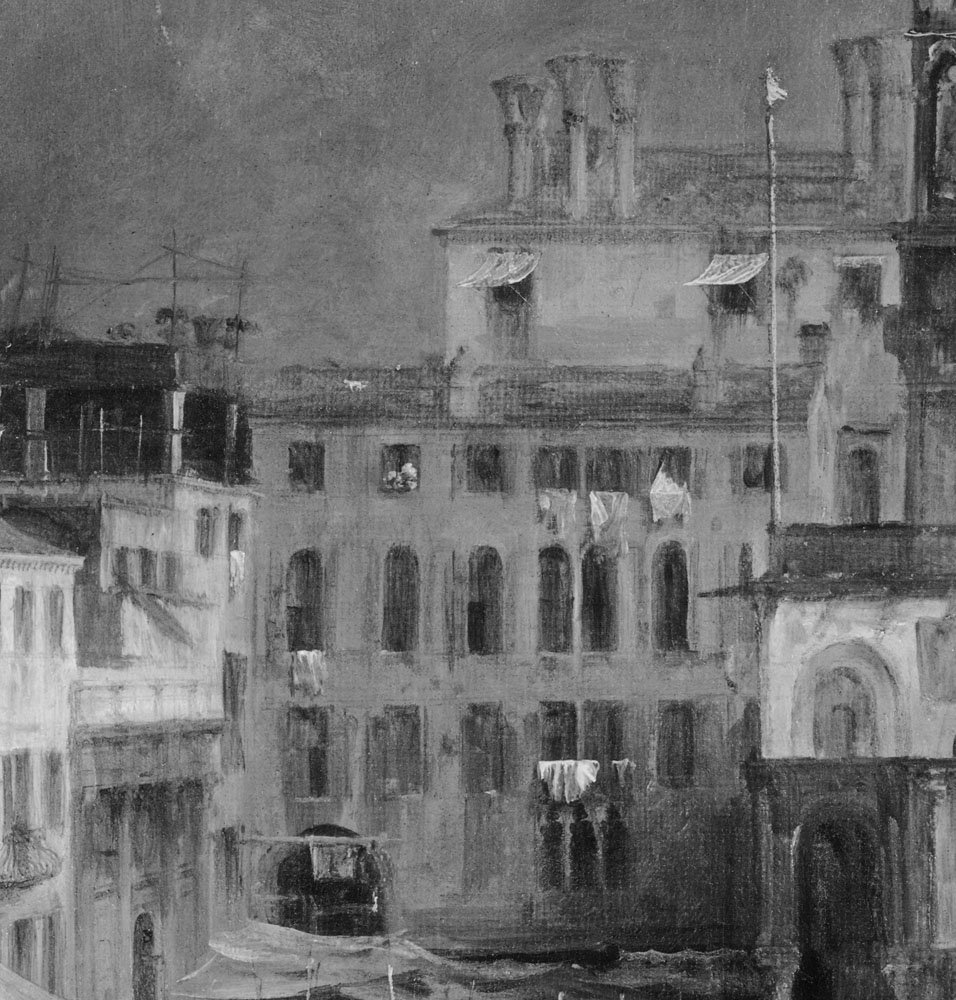
The domes of San Marco
X-ray imaging provides clear proof of the Italian painter's efficient technique, able to eloquently recreate the most minute details with rapid, loose brushstrokes. The different densities detected in the X-ray show that none of the strokes were applied randomly and the artist knew exactly how to represent this complicated perspective view.
